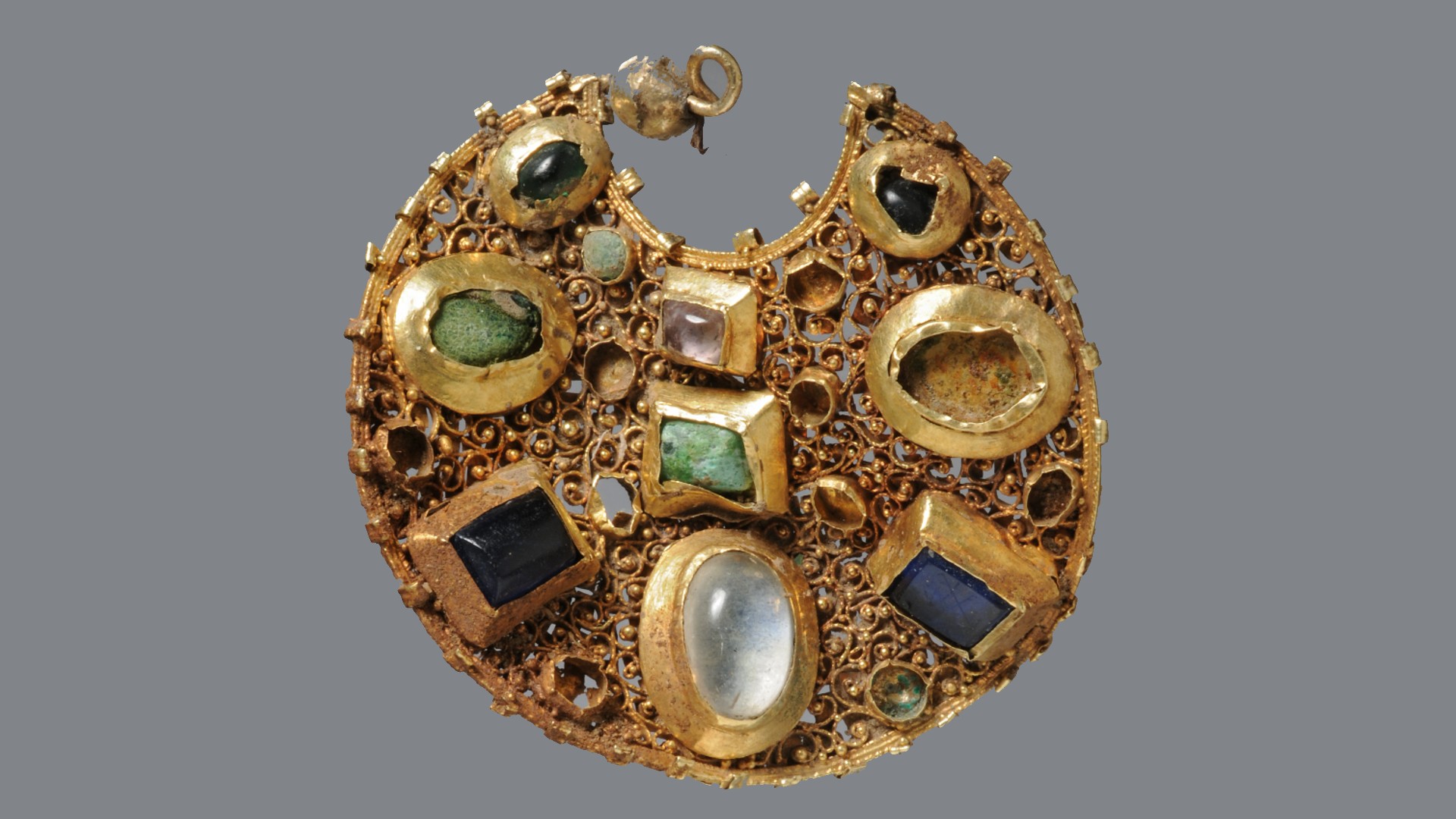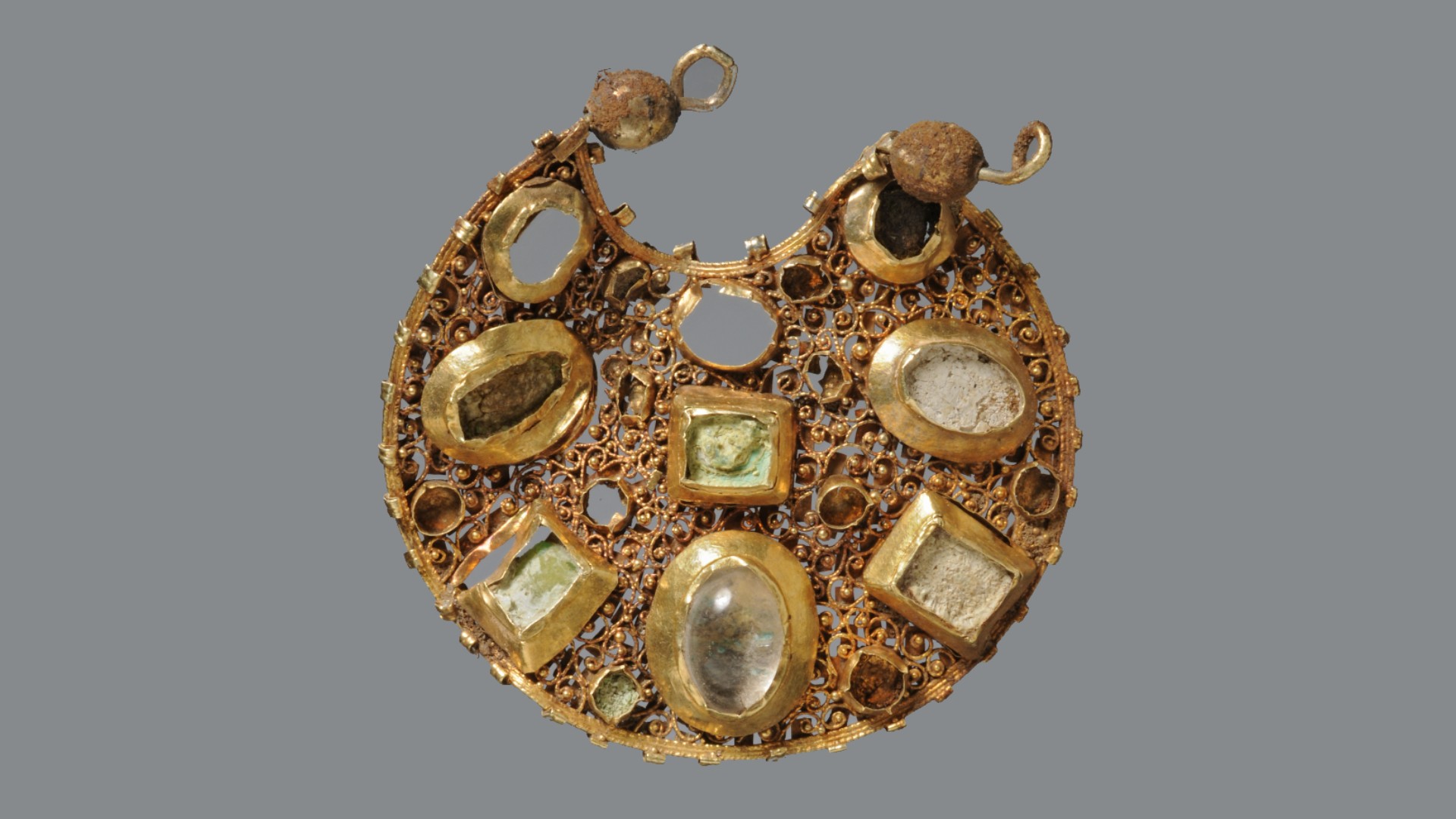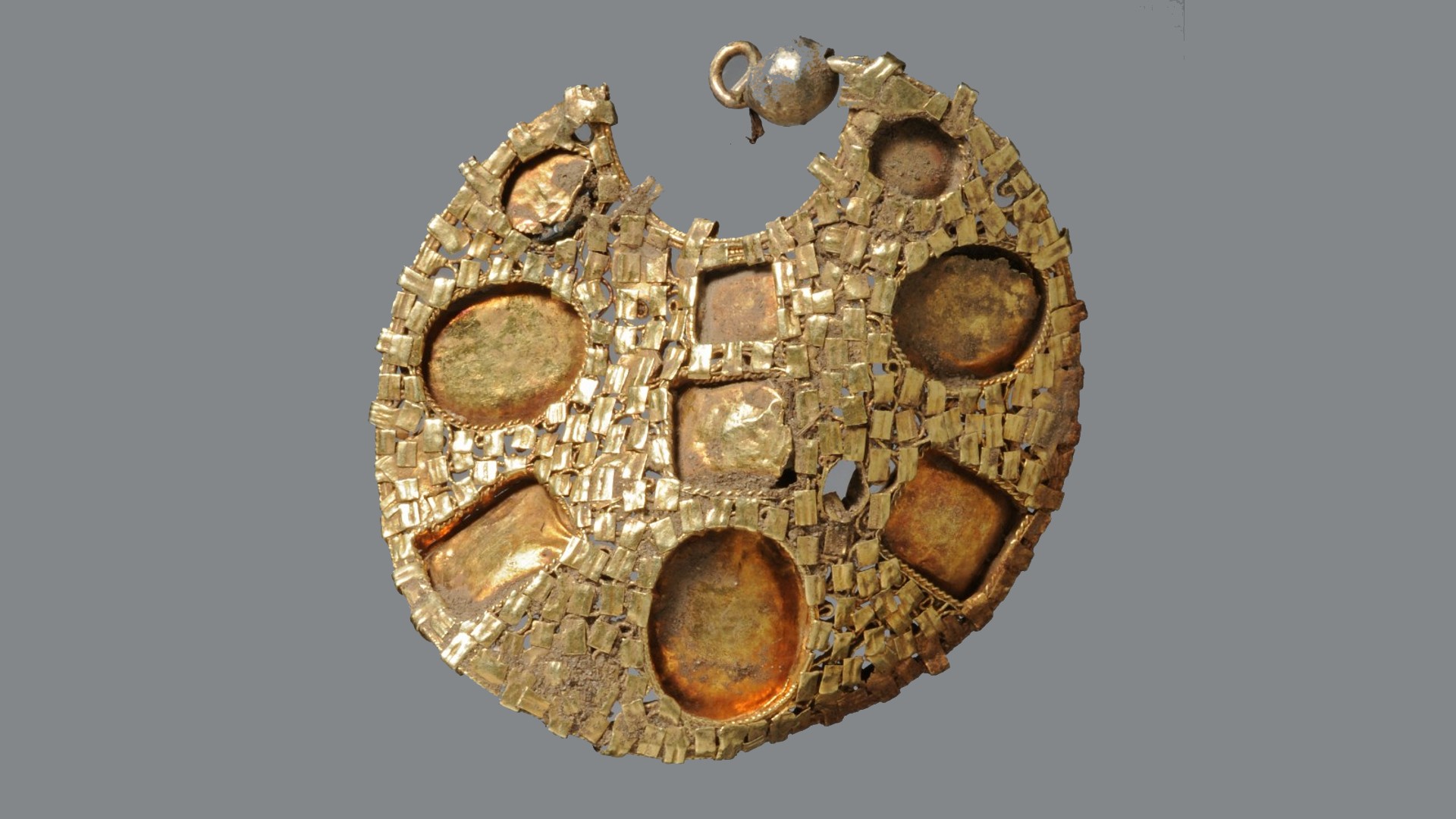Stunning gem-covered gold earrings discovered in 800-year-old hoard in Germany
Byzantine earrings and an Islamic-style coin were found by a town key to Viking trade in Germany.

A trainee metal detectorist in northern Germany recently hit on something his mentor never expected: an 800-year-old hoard of gold jewelry and silver coins that hints at the area's trade connections.
The large hoard contained a dazzling collection of artifacts. "The hoard consisted of two very high quality gold earrings set with semi-precious stones, a gilded pseudo-coin brooch, two gilded stone-studded finger rings, a ring fragment, a small formerly gilded perforated disc, a ring brooch, and about 30 silver coins, some of them heavily fragmented," Ulf Ickerodt, director of the State Archaeological Department of Schleswig-Holstein (ALSH), told Live Science in an email.
For decades, amateur and professional archaeologists have been working together to investigate the region of Schleswig-Holstein, and in particular the UNESCO world heritage site of Haithabu. Known as Hedeby in Danish, the site was the second-largest Nordic town and was important to the Vikings between the eighth and 11th centuries. Haithabu was destroyed and abandoned around 1066, ending the Viking era in the region, but a century or two later someone purposefully buried the bag full of valuables nearby.
The detectorists came across the hoard while walking a well-studied patch of land. They reported the find to the ALSH, and a team of archaeologists then excavated the site to reveal items including silver and gold objects with preserved textile fragments adhering to them.
Perhaps the most remarkable items in the hoard are the two earrings. "They probably date to the time around and after 1100 and are in the tradition of Byzantine goldsmiths," Ickerodt said. The hoard also contained an imitation of an Islamic coin — an Almohad gold dinar — that had been made into a brooch. The Almohad caliphate was a Muslim dynasty that ruled over southern Spain and northern Africa between the 12th and 13th centuries. The 30 silver coins, minted during the time of Danish King Valdemar II, suggest that the hoard was buried some time after 1234.
Related: 2,000-year-old Celtic hoard of gold 'rainbow cups' discovered in Germany



The combination of Danish coins and western Mediterranean jewelry is particularly interesting and hints at the cosmopolitan nature of the area.
Get the world’s most fascinating discoveries delivered straight to your inbox.
"Islamic coins were well known in southern Scandinavia between the 9th and 11th centuries," Marjanko Pilekić, a numismatist in Germany who was not involved in this study, told Live Science by email. The money may have "reached this area en masse through long-distance trade contacts, robbery, tribute, among others," he said. "It was a popular practice to pierce or loop the coins and wear them."
The discovery of hoards is rare in Schleswig-Holstein, and it's unclear whether these items were personal property or stolen, if they were meant to be delivered to someone else, or if they were buried for ritual reasons. "Especially in times of crisis," Ickerodt said, "the resulting danger leads to the hiding of possessions." The Haithabu area was not abandoned for long after its destruction in the mid 11th century. Across the inlet of Schlei, Schleswig had begun developing as a settlement and trading center. "An extensive north-south and east-west trade network has developed here since the early Middle Ages, in which the Mediterranean region, the North Sea, and the Baltic Sea were integrated," Ickerodt said. "The hoard was certainly not put down by chance."

Kristina Killgrove is a staff writer at Live Science with a focus on archaeology and paleoanthropology news. Her articles have also appeared in venues such as Forbes, Smithsonian, and Mental Floss. Kristina holds a Ph.D. in biological anthropology and an M.A. in classical archaeology from the University of North Carolina, as well as a B.A. in Latin from the University of Virginia, and she was formerly a university professor and researcher. She has received awards from the Society for American Archaeology and the American Anthropological Association for her science writing.




